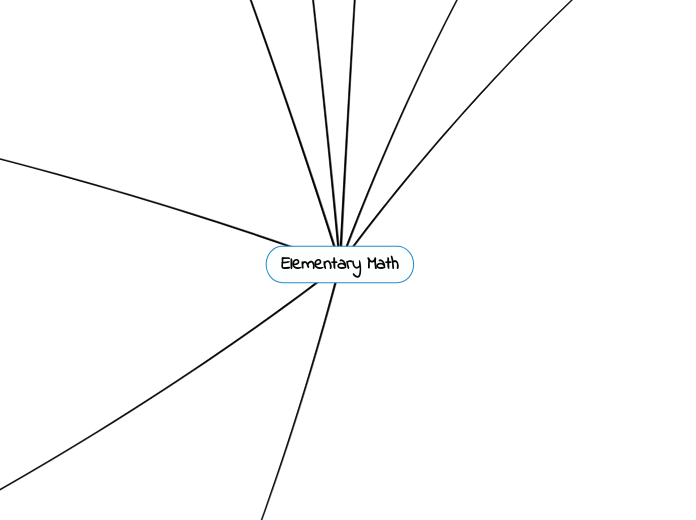
Polya's Problem Solving
Notes:
There are 4 steps
Understand the problem
Develop a plan
Carry out the plan
Self-review
Otherwise known as Undevcarlo
Vocabulary
Notes:
The order that kids learn
1. More or less
2. Counting
3. One to one correspondence
4. Cardinality
5. Subitizing
6. Number Recognition
One to one correspondence: When students count one item and they say one number
Cardinality: They don’t have to continue to recount the same number of items over and over again
Subitizing: They look at the items and know how many there is of each
Base 10
Notes:
Intro to Base 10 blocks
What is a Flat? A flat is the large square
What is a long? A long is the line
What is a unit? A unit is a single cube
How to convert base 10 blocks to other bases
Example: 35 to base 5 = 120 five
Patterns
1 2 3 4 5 6 Buzz 8 9 10 11 12 13 Buzz 15 16 Buzz 18 19 20 Buzz
Expanded Form Addition
Notes:
Expanded Form is when you Expand each place value and add them up
Example:
333+777=
300+30+3
700+70+7
---------------
1,000+100+10+ 1,110
Left to Right Addition
Notes:
Left to Right is when you write the the problem vertically and add each place value from left to right hence the name
Example:
234+432=
234
+434
----------
600
60
+ 8
--------
668
Friendly Numbers Addition
Notes:
Friendly Numbers
Find the number that would add to the next tenth easier and then subtract that number from the original number
Example:
23+22=
-3 +3
----------
20+25=45
Trading Off Addition
Notes:
Trading off is when you take an amount from one value and subtract and add it to the other place value to make it a number with a zero
Example:
23+27=
-3 +3
----------
20+30=50
Repeated subtraction
When using repeated subtraction you set up to divide as usually, but you write a line to the right of the problem and instead of putting the quotient on top you're putting it on the side and you keep subtracting until you can't anymore.
3| 574 |
-300| 10
--------|
274 | 50
- 150 |
----------
124 | 40
- 120 |
----------
4 | 1
- 3 |
-----------
1
Answer 191 1/3
Upwards Division
Upwards division is when you write the problem as a fraction first and leave extra space in between the numbers, you then divide each number individually and get your answer
7 -5 24 -20= 4
--------------------= 14 4/5
5
Subtopic
Arrays
Arrays are another creative way to multiply numbers. It illustrates and makes it easier for students to see what’s going on. A problem would be 12(13) you would draw a long and 3 ones vertically and one long and 2 ones horizontally and connect the lines and solve.
Expanded Form Multiplication
Expanded Form is when you Expand each place value and multiply them vertically
Example:
25x36
20+5
30+6
-------
600+120
150+30
------------
750+150=900
Left to Right Multiplication
Left to Right is when you write the the problem vertically and multiply each place value from left to right hence the name Example:
48
x73
----------
2,800
560
120
24
-----------
3,504
Area Model Multiplication
Area model is like trying to find the area of a rectangle
You draw a rectangle, expand the number, put the first problem on the top vertically and the second on the side vertically and draw a line where the addition symbol is and solve.
Lattice Multiplication
Is the same thing as addition just instead of putting the numbers on the left you would but them on the right
Expanded Form Subtraction
Notes:
Expanded Form is when you Expand each place value and subtract them
Example:
777-333+
700+70+7
300+30+3
---------------
400+40+4+ 444
Equal Addends
Notes:
Equal Addends is when you're subtracting and you can’t subtract because the bottom number is greater than the top number. This is when you add a number to both digits so it’s possible to subtract.
Example
42-28=
+2 +2
-------------
44-30= 14
Multiplying
Multiplying is making a group of a certain number within those groups
3(5) is 3 groups of 5 or 3 multiplied by 5
We also talked about how time test are bad for students because they memorize instead of learning the content.
Scratch Method Addition
Notes:
Write the problem vertically and as you go down add up to 10, once you get 10 scratch the number and move on to the next number and leave what’s left over next to the scratch. Once you're done scratch the ones place values add up all the scratch and place the number on top of the tenths place value and repeat
Example:
21
12
23
325
+65
------
2 1 5
Lattice Method Addition
Notes:
Write the problem vertically at the end, draw a box and make diagonal lines across every place value. Add vertically by placing the tens place number in the top and the ones place value in the bottom.
Subtracting Bases
Notes:
Subtracting base is the same as addition but you just subtract instead of adding them. When showing them you circle the ones being subtracting and draw an arrow to show they aren;’t part of the problem anymore.